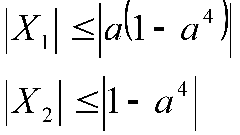You will need
- the value of the parameter.
Instruction
1
If the parameter values change over time, use as intervals time intervals, for example, hour, day, month, year. If you select minimum interval, consider the number and scatter of data, try to keep the number distribution was most informative and at the same time compact. For example, if you are given data by months for two years, split for years nothing will be able to speak, and use as a interval a month in some cases will lead to the erosion data. The optimal solution in this case will be broken down by quarters.
2
If time for sampling is not matter, form, interval intervals depending on the values. For this rate range, maximum and minimum value, and select the amount of space. You can use this method: subtract from the maximum value to the minimum and the difference, divide by the desired number of intervals. Then set boundaries, of course, better if it will be integers. For example, you are given 32, 33, 35, 38, 45, 47, 48, 50, 58, 59, 63. After settlement you will receive (63-32)/5=6,2. Round the interval size up to 7. Thus, you get the intervals: (32-39), (40-47), (48-55), (56-63).
3
Please note, it is best to make the boundaries of the intervals are not overlapping, i.e. the next interval does not begin with the same number, and more per unit. This will allow you to avoid disagreements and misunderstandings.
4
Once you distribute all the intervals, count the number of values in each of them. Record the results in a table where in one row it will show borders, the other with the number of values lying within the boundaries of this interval. In the above example, the calculation of the number of results will look like this: interval (32-39) includes the values 32, 33, 35, 38 – only 4 values. So, in the first table cell below this interval, enter the number 4. Similarly, calculate values for the following intervals: (40-47) – 2, (48-55) – 2, (56-63) – 3.





